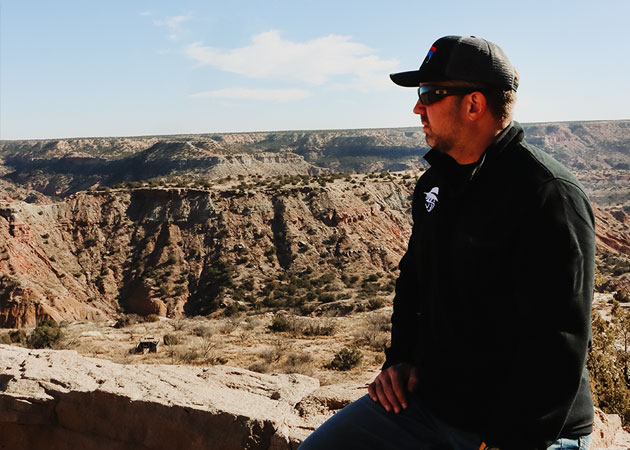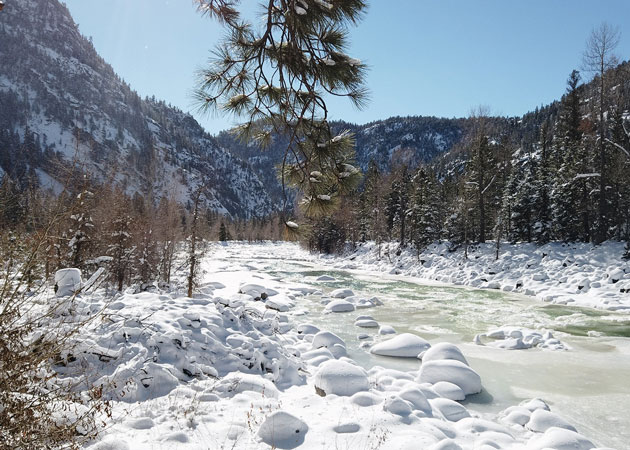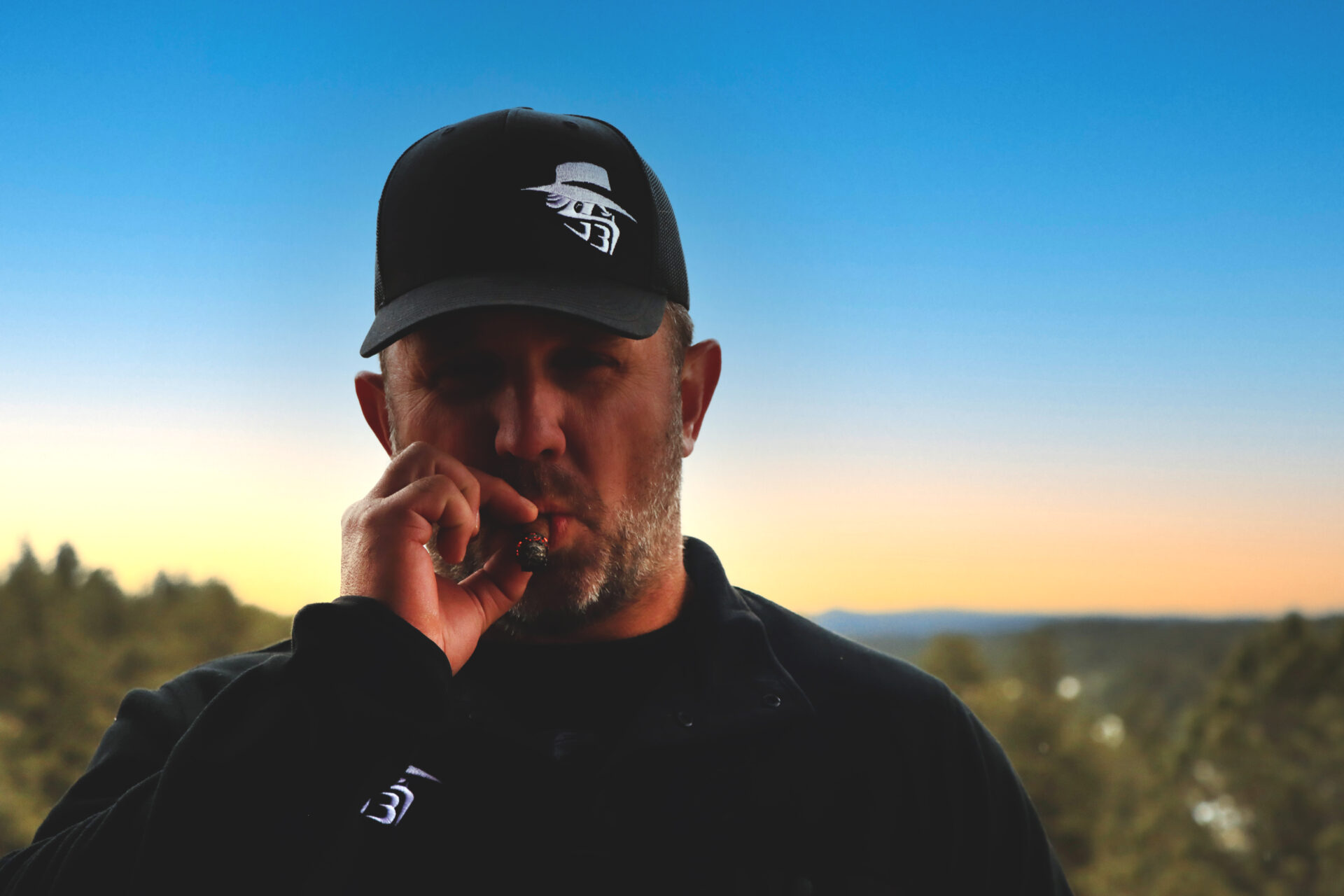Texas Black Bear Interactive Range Tracker

Ever found yourself captivated by the gentle lumbering of a black bear in Texas? The sight can stir something deep within us. It’s not just their imposing presence, but also the knowledge that these majestic creatures are slowly returning to places they once roamed freely.
This isn’t your usual nature story though. These bears aren’t wandering aimlessly; black bear in Texas are part of a silent recolonization happening right under our noses in the Lone Star State. From West Texas to East Texas, even reaching Big Bend National Park, you’ll learn where and why this is taking place.
And while their comeback sparks curiosity for some, it stirs fear in others – how do we coexist with one of North America’s largest mammals? But don’t worry – we’ve got insights on everything from understanding their behavior to handling human-bear conflicts responsibly.
Table Of Contents:
- Overview of Black Bear in Texas
- Distribution of Black Bear in Texas
- Texas Trans-Pecos Region: A Haven For Our Furry Friends?
- Black Bear in Texas Range in Texas
- Behavior and Characteristics of Black Bears in Texas
- Dietary Habits: What do These Largest Mammals Eat?
- Management and Conservation Efforts for Black Bears in Texas
- Comparing Black Bears in Texas to Other Bear Species
- Conclusion
Overview of Black Bear in Texas
The black bear population in Texas has been a subject of interest for many wildlife enthusiasts and researchers. The color range of these magnificent creatures can stretch from pure black to cinnamon brown, which is an eye-catching sight indeed.
Natural Recolonization of Black Bears in Texas
A small breeding population has found its way back into the heartland, specifically reestablishing itself within the Chisos Mountains situated at Big Bend National Park. This park is renowned as a hub for diverse wildlife, including our furry friends who tip the scales between 200-300 pounds.
Sightings are now reported annually across various mountain scapes throughout this southern state. Yet it’s not just their robust weight or unique fur that makes them intriguing but also their ecological role within our natural environment.
Importance of Black Bears in Texas in the Ecosystem
Black bears play an integral part when it comes to balancing nature’s intricate web. They contribute significantly towards seed dispersal thanks to their diet primarily composed of fruits and nuts during certain seasons.
Besides being ardent hikers covering vast territories each year, they help regulate populations by preying on animals such as deer fawns and elk calves. By keeping herbivore numbers checked, they prevent overgrazing which ultimately protects vegetation diversity.
This vital role extends beyond forest ecosystems too. Their extensive burrowing habits create homes for countless species while their droppings act as excellent fertilizers promoting nutrient recycling – truly nature’s own waste management system.
Distribution of Black Bear in Texas
When we talk about the distribution of black bears in Texas, it’s a tale of survival and resurgence. The creatures that once roamed freely are making their comeback. By the time Texas Parks and Wildlife Department started its first organized survey, black bears were almost wiped out from most parts of the state.
Per Texas Black Bear Alliance, the following are the changes of Black Bear in Texas habitat:
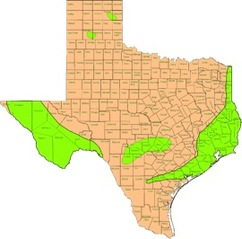 | 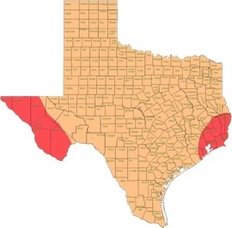 | 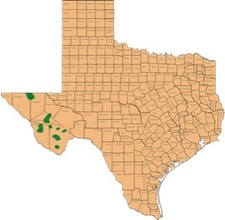 |
Black bear range in 1890. Source TBBA | Black bear range in 1910. Source TBBA | Black bear range in 1940. Source TBBA |
West Texas is Bear Country
In West Texas, or what some folks call “Bear Country”, you’ll find these magnificent animals back on their feet again. Despite hardships they faced over centuries due to habitat loss and hunting pressure, resilient nature has led them home.
The Guadalupe Mountains host quite a few sightings every year – although they’re not officially counted yet as part of our bear population. You might ask why? Well, these roaming wanderers could just be transient males searching for new territories.
Black Bears in Big Bend National Park
Moving further westward towards Big Bend National Park, this story becomes even more fascinating. Known for its vast desert landscapes interspersed with rugged mountains- It’s here where most reported bear sightings happen annually.
You see, within this sprawling national park lies Chisos Mountains – acting like an oasis amidst arid land where vegetation is lush enough to support a breeding population.
Texas Trans-Pecos Region: A Haven For Our Furry Friends?
It seems so. If we head north from Big Bend along the Rio Grande, we enter the Trans-Pecos region. This part of Texas, despite its harsh desert climate and rugged terrains has seen a steady increase in bear sightings too. That’s right – from being nearly extinct here just a few decades ago to having their own pockets of populations now.
East Texas isn’t far behind either. Although reports are sporadic compared to West Texas regions, there have been confirmed sightings near Lake Texoma and even as far east as Northeast Texas.
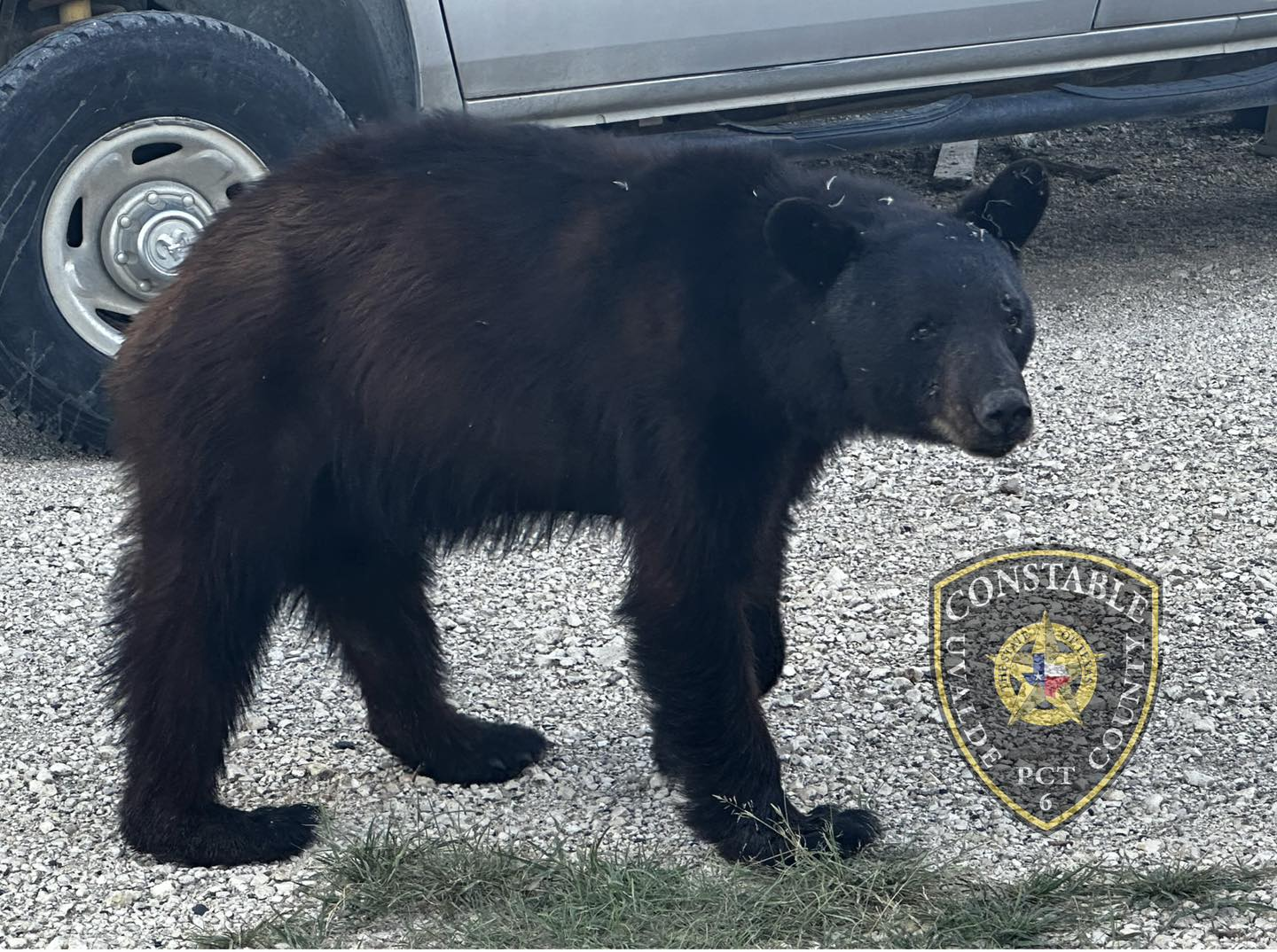
The Black Bear in Texas Map or Range in Texas
Through crowd sourcing data (sightings confirmed by Texan hunters, ranchers, and outdoor enthusiast) James Bigley Ranches has one of the most up to date databases of reported black bear sightings and the current Texas black bear range anywhere. Below is an up to date black bear in Texas map of counties and sightings of the black bear range in Texas. Red star is a confirmed sighting. As you can see black bears are moving to the Edwards Plateau region even as far as Uvalde Texas, Eastern Texas, and so on. Please refer to the live interactive map below in addition that is updated at least four times a year.
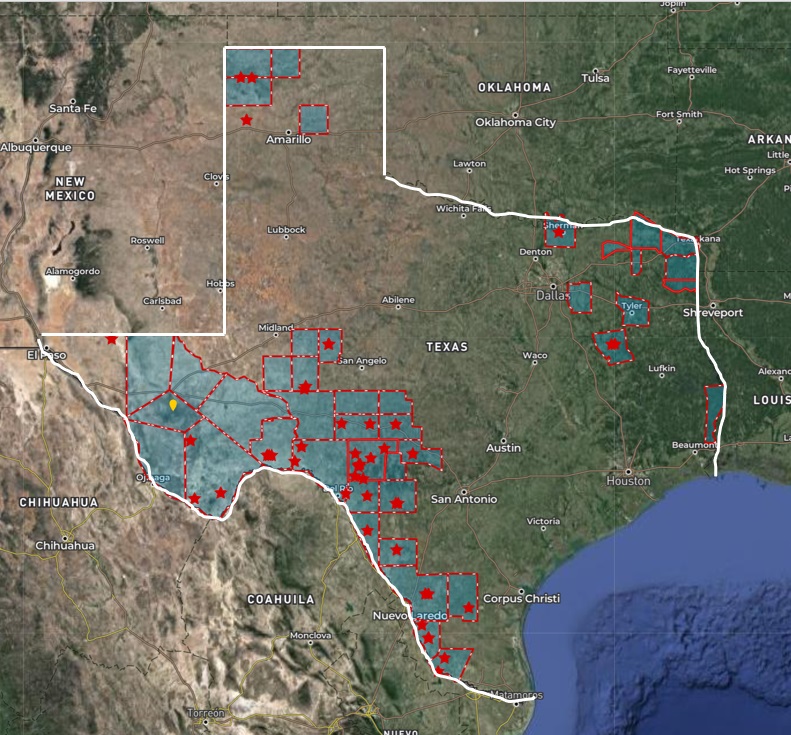
The black bear in Texas map, black bear sightings, black bear range in Texas.
Key Takeaway:
Black bears are making a comeback in Texas, showing their resilience against past hardships. Their resurgence is most notable in West Texas and Big Bend National Park where sightings have increased. Despite the harsh desert climate of the Trans-Pecos region and sporadic reports from East Texas, these furry creatures are reestablishing themselves across the state.
Behavior and Characteristics of Black Bears in Texas
If you’ve ever spotted a black bear in the wild, it’s an experience you won’t forget. Especially if that sighting was right here in Texas. But let’s delve deeper into their unique behavior and characteristics.
Physical Characteristics of Black Bears
You’ll know a black bear when you see one. Weighing between 200-300 pounds, they’re not exactly subtle creatures. Their fur is long and coarse, often jet-black but can sometimes be cinnamon brown.
The front claws are generally longer than hind claws – an interesting fact that differentiates them from other bears.
Interactions with Humans and Other Wildlife
We love our wildlife here at James Bigley Ranches but interacting with these large mammals requires caution for both parties involved.
A few reports of nuisance animals rummaging through deer feeders or knocking over trash cans have been noted recently. That’s why we always stress the importance of securing your food sources and using bear-proof dumpsters whenever possible to deter these curious critters.
Dietary Habits: What do These Largest Mammals Eat?
They aren’t just opportunistic eaters though; their diet varies greatly depending on location, season, and availability.
While there has been some debate about whether black bears pose any significant threat to humans – rest assured that incidents where they injure humans are extremely rare.
As far as reproduction goes – it’s pretty fascinating too. Bear cubs wrestling is a common sight during springtime as part of their learning process.
These cubs will stay with momma bear until she begins breeding again, usually after a year and a half. This is an essential period for the cubs to learn survival skills.
As we continue our bear study, one thing’s clear: black bears are complex creatures with unique characteristics that set them apart from other wildlife in Texas.
When you visit our parks or see these creatures in your own backyard, it’s crucial to respect their space. Always remember to keep a safe distance and enjoy observing them from afar.
Key Takeaway:
Seeing a black bear in Texas is something you won’t forget. These big guys weigh between 200-300 pounds and usually have a jet-black coat, but sometimes they’re cinnamon brown. They’ve got longer front claws that set them apart too. Sure, we hear stories about them going through deer feeders or trash cans now and then. But don’t worry – if we make sure to secure our food sources and use bear-proof dumpsters, it can help keep these encounters at bay. Just so you know, the diet of black bears changes depending on what’s available.
Management and Conservation Efforts for Black Bears in Texas
The management of black bears in Texas is a crucial part of the work done by the Texas Parks and Wildlife Department (TPWD). The department’s efforts focus on studying bear populations, their behavior, habitats, as well as monitoring potential threats.
Texas Parks and Wildlife Department’s Role in Black Bear Management
One key component of TPWD’s strategy involves comprehensive research. For instance, a detailed study conducted revealed that black bears were widely distributed across suitable habitats throughout Texas before Anglo-American settlement. Understanding historical distribution patterns allows TPWD to make more informed decisions about conservation strategies.
Beyond research activities, TPWD also plays an active role in public education campaigns around these large mammals. These initiatives aim to foster coexistence between humans and wildlife by providing guidance on how we can live alongside one another without conflict.
Human-Bear Conflicts Management
The interaction between humans and wild animals can sometimes lead to conflicts. To mitigate this issue effectively while protecting both parties involved, it’s important that people understand what they should do if they encounter a bear out there – whether at home or during outdoor adventures like hiking or camping.
A simple yet effective method suggested by TPWD is the use of bear-proof dumpsters which helps keep our neighborhoods clean while ensuring bears don’t get access to human food sources – thereby reducing potential encounters with these creatures near populated areas.
In situations where persistent nuisance animals pose significant safety risks despite preventative measures being taken into account such as using deterrents or altering habits (like storing food securely), then trained professionals from TPWD are called upon for help.
Bears in the Big Picture
Managing black bear populations is not only about preventing conflicts with humans. It is imperative to comprehend that these animals have a fundamental job in keeping up ecological equilibrium. For example, bears are among the largest mammals in North America and their presence indicates a healthy ecosystem.
to the health and balance of their ecosystems. They play a crucial role by spreading seeds around and keeping insects in check, both actions that support overall ecosystem stability.
Black Bear in Texas Hunting Information and Safety
Electric fences can effectively prevent bears from accessing feeders while still allowing deer to reach them. To further discourage bears, hunters should keep their camps clean to avoid attracting them with odors. It is important for hunters to dispose of gut piles far away from their camps and use automated feeders that are out of the bears’ reach. Additionally, switching from corn to soybeans as bait and planting food plots can help attract deer instead of bears. It is crucial for hunters not to mistake black bears for hogs, as killing a black bear in Texas is illegal and carries severe penalties such as fines up to $12,000, possible jail time, and loss of hunting privileges. If any poaching activity is witnessed or suspected, Sweeny Enterprises provides a 24-hour toll-free hotline for reporting it. For additional information go here – LINK

Key Takeaway:
The Texas Parks and Wildlife Department (TPWD) plays a crucial role in managing black bears, through studying their populations, habitats, behaviors, and potential threats. TPWD also educates the public about coexistence with these large mammals. Conflict management strategies include bear-proof dumpsters to keep neighborhoods clean and safe. Above all else though, it’s essential for us to remember that living harmoniously with black bears is not just possible but critical for maintaining biodiversity.
Comparing Black Bears in Texas to Other Bear Species
Texas black bears contrast with their relatives like the Louisiana black bear and other species, such as grizzlies, polar bears, browns and American blacks. The differences lie not just in physical attributes but also behavioral patterns.
The American black bear (Ursus americanus), which includes both the Texas and Louisiana sub-species, is generally smaller than its counterparts. Weighing between 200-600 pounds for males while females usually weigh less. Their fur color can range from pure white through chocolate-brown to jet-black.
Meanwhile, Louisiana Black Bears, a subspecies of the American Black Bear, has slightly different characteristics including longer skull shapes and proportionately larger molar teeth.
Distinguishing Physical Traits
Grizzly or brown bear (Ursus arctos), native to North America, stands out with humped shoulders and long claws that help it dig up roots or pry apart logs to find food. They are substantially bigger compared to Texas’ Ursus americanus, weighing around 500-900 pounds for males.
Polar Bears (Ursidae maritimus), residing primarily within Arctic Circle regions, have an unmistakable snowy-white coat contrasting starkly against all others. This beast could tip scales at well over 1600 pounds.
Niche Preferences & Behaviors
Bears show preference towards specific habitats too. While our Texan friends prefer forested landscapes and river valleys, Louisiana black bears love hardwood forests. Polar Bears? They’re ice lovers.
Black bear behavior can also vary by region and species. For instance, the Texas Black Bear is known to be relatively docile unless threatened or protecting cubs.

The Exceptional Adaptability of Black Bear in Texas
These magnificent creatures showcase an impressive level of adaptability. Whether it’s the humid swamps of Louisiana, icy tundras for Polar Bears, rugged mountains for Grizzlies, or versatile Texan landscapes – they’ve successfully made a home in various environments. Their resilience and flexibility are truly something to admire.
Key Takeaway:
Texan black bears are unique, not just in looks but also behavior, compared to other bear species. They’re generally smaller and prefer forested landscapes. Each type of bear – be it the grizzly with its humped shoulders or polar bears with their snowy-white coat – has distinct physical traits and habitat preferences that showcase their incredible adaptability.
Conclusion
Learning about the black bear in Texas gives us a deeper appreciation for these magnificent creatures. Their natural recolonization speaks volumes about their resilience and adaptability.
Their return to regions like West Texas and Big Bend National Park is truly remarkable. Black bears are an essential part of the environment, impacting everything from vegetation to bugs.
We’ve also touched on their unique characteristics – from color variations to impressive claws. Interactions with humans can be managed responsibly, thanks to guidance from the Texas Parks and Wildlife Department.
Bear this knowledge in mind as we coexist with one of North America’s largest mammals. And let’s not forget that they’re more than just animals; they’re symbols of wilderness making an incredible comeback.
FAQ
What Texas counties have bear sightings?
Texas black bear sightings and known range include the following counties:
Counties include Culberson, Reeves. Jeff Davis, Presidio, Brewster, Pecos, Terrell, Upton, Glasscock, Sterling, Reagan, Crockett, Schleicher, Menard, Sutton, Kimble, Val Verde, Edwards, Kinney, Uvalde, Kerr, Maverick, Dimmit, Webb, Duval, Zapata, Starr, Dallam, Sherman, Hartley, Carson, Grayson, Delta, Kaufman, Smith, Anderson, Delta, Franklin, Red River, Bowie, Cass, Marion, Newton
Where in Texas are black bears?
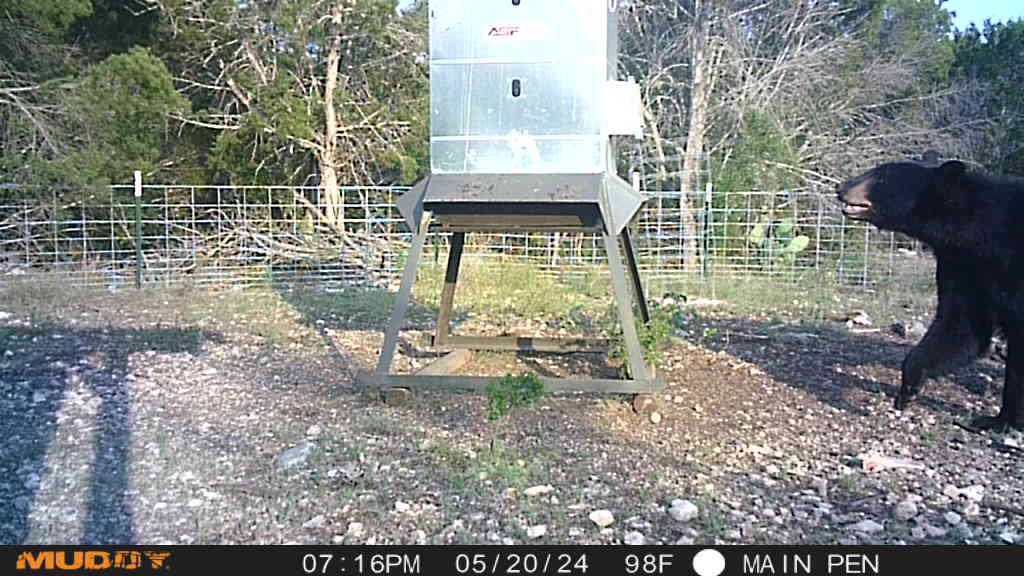
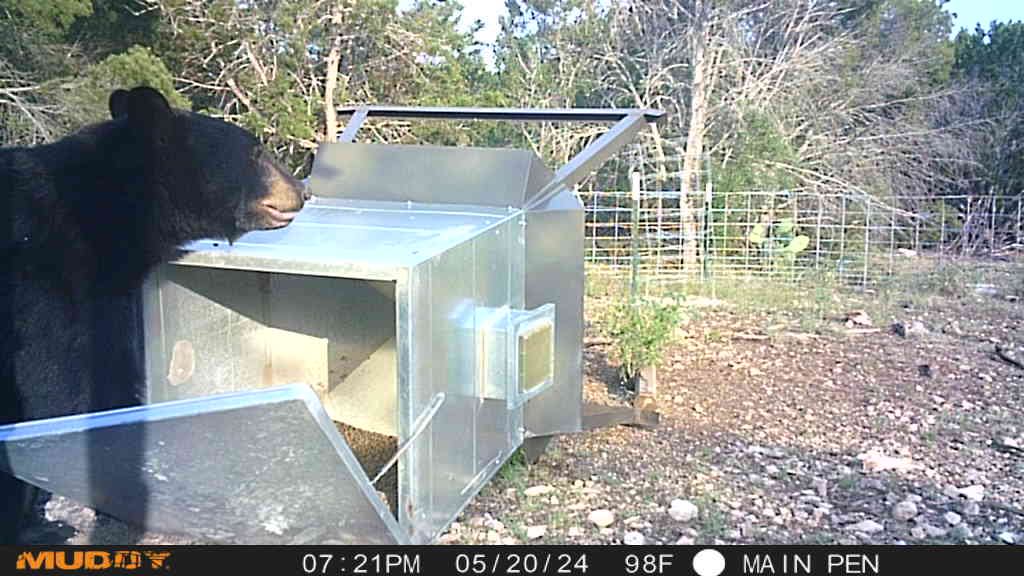
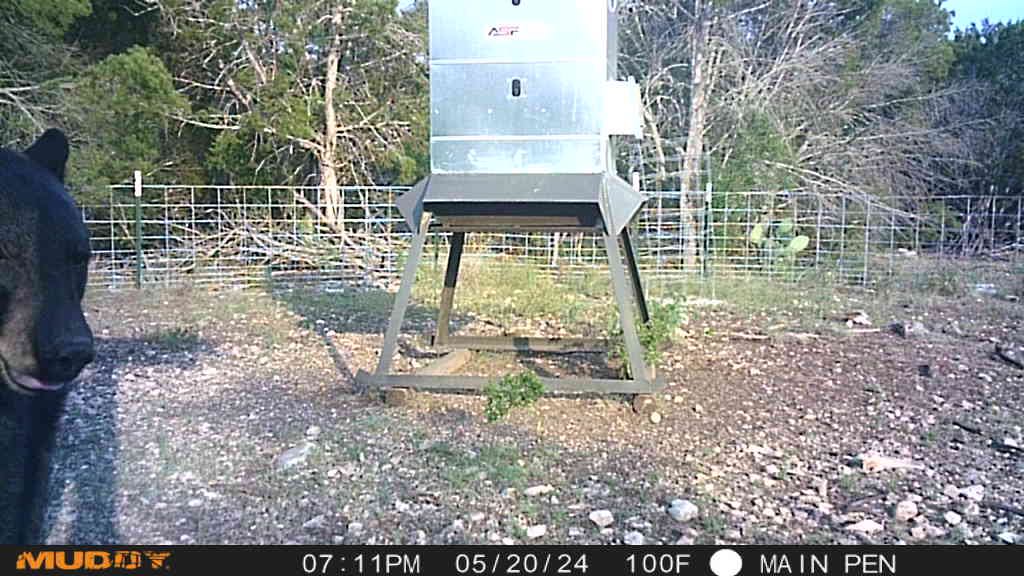
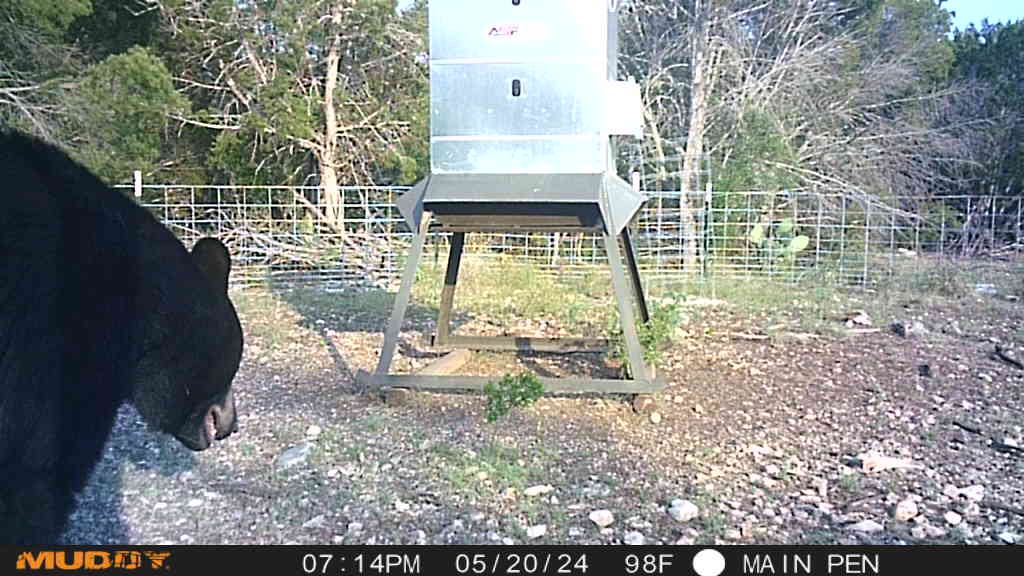

A Comprehensive Guide to Financing Land
A Comprehensive Guide to Financing Land: Strategies, Considerations, and Steps Introduction Land has always been a symbol of stability, opportunity, and prosperity. From ancestral homesteads
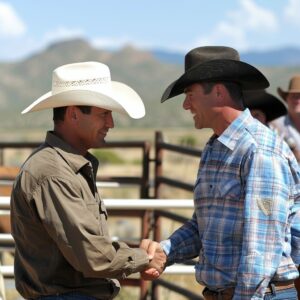
Mastering Land Sales: A Comprehensive Guide to Selling Your Property
Mastering Land Sales: A Comprehensive Guide to Selling Your Property Introduction The process of selling land is often perceived as a complex and challenging endeavor,
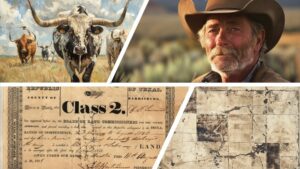
Legal Checklist for Ranch Investments
Legal Checklist for Ranch Investments In ranch investments, legal considerations are the bedrock upon which successful transactions and operational endeavors are constructed. Ranching ventures are
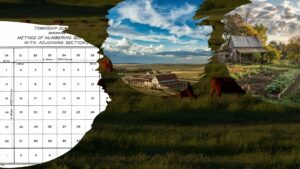
Is 10 Acres Considered a Ranch? Debunking Common Misconceptions
Is 10 Acres Considered a Ranch? Debunking Common Misconceptions 1. Introduction Ranching, with its iconic imagery of wide-open spaces, cowboys herding cattle, and sprawling homesteads,

The Top Five Largest Ranches in Texas: A Deep Dive into the Heart of Ranching Heritage
The Top Five Largest Ranches in Texas: A Deep Dive into the Heart of Ranching Heritage Introduction Texas, often hailed as the heart of ranching
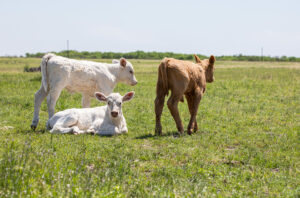
The Intricacies of the 2-Cow Tax Loophole in California: Unveiling the Complexities
The Intricacies of the 2-Cow Tax Loophole in California: Unveiling the Complexities Introduction Taxation is a fundamental aspect of modern society, serving as the
